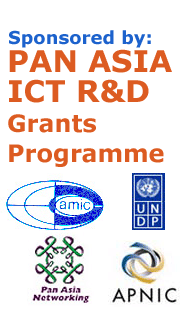
 |  |  |  |
 |
 | ||||||||||||||||||||||||||||||||
|
| ||||||||||||||||||||||||||||||||
 |
South Asia is one of those unique parts of the world where single languages are written in different scripts. This is the case for example with Punjabi, spoken by tens of millions of people, but written in Indian East Punjab (20 million) in Gurmukhi script (a Left to Right script based on Devnagri) and in Pakistani West Punjab (80 million), it is written in Shahmukhi (a Right to Left script based on Arabic.) and growing numbers of Punjabis (2 million) in the EU and US who use Roman script. Whilst in speech, Punjabi spoken in the Eastern and the Western parts is mutually comprehensible in the written form it is not. This is also the case with other languages like Urdu and Hindi (whilst having different names, they are the same language but written, as with Punjabi, in mutually incomprehensible forms). In 1947 with the creation of India and Pakistan the Punjab, one of the most populous and strategically important of the Northern States of the Subcontinent was partitioned into East (Indian - 20% pop) and West (Pakistani -80% pop). The historic scriptural divide in Punjab took on communal undertones. With Sikh’s in the East using Gurmukhi and Muslims in the West Shahmukhi. We aim to provide a tool that will help Punjabi people to link across a hostile geographical divide. In so doing we will provide an ITC solution to a social problem that had seemed insurmountable for centuries. More than 60 per cent of Punjabi literature of medieval period is available in Shahmukhi script only, while most of the modern Punjabi writings are in Gurmukhi.The existence of two scripts for Punjabi has created a script barrier between the Punjabi literature written in India and Pakistan. A computer program capable of automatic transliteration between Gurmukhi and Shahmukhi scripts will be big boon for breaking the script barrier for Punjabi. The readers in both India, Pakistan and abroad will be able to read Punjabi literature published in any of the above mentioned scripts. This would go a long way in bridging the gap between Punjabi readers and writers of both the Punjabs and bring the Punjabis closer. In East Punjab the Gurmukhi script is widely available and used in the publication of newspapers, magazines and other publications. It has its own Truetype fonts that are cheap and easily accessible. However, literature or electronic Punjabi produced in the East cannot reach the population in the West and vice Versa. As neither can read the different scripts for the same language. With the advent and strides in ICT, it is now possible, for the first time in history, to offer a means of communication across the script barriers in Punjab. This will not merely facilitate communication across previously impervious divides but also contribute to the advance in the use of ICT to potentially 100 million people. This will also facilitate communication with the Punjabi diaspora now with large populations in the EU, particularly in Britain, Germany and Holland. |
